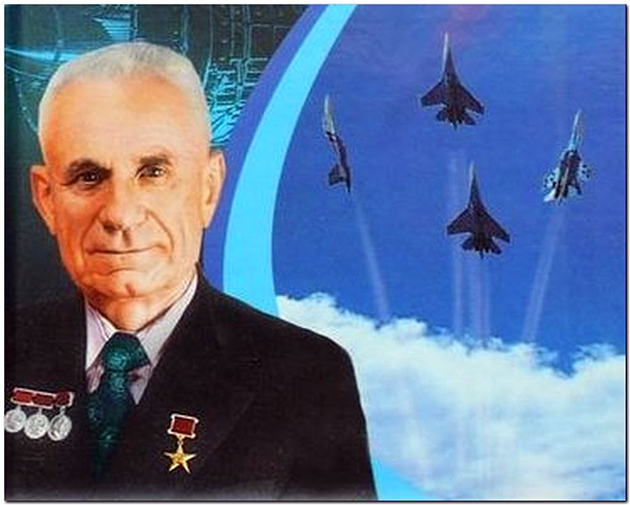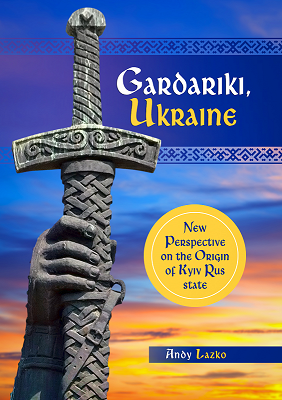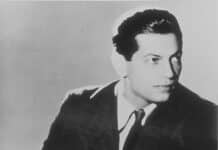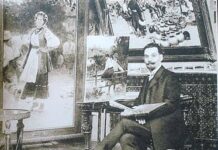In 1926, a young man from the Kyiv region entered Kyiv Polytechnic Institute. The man’s first name was Arkhyp, and his last name was Lyulka, which in Ukrainian means cradle. (Etymologically, English words ‘lull’, and ‘lullaby‘ most likely derive from the same root as ‘lyulka’). After graduating from Kyiv, Lyulka moved to Kharkiv and started teaching at Aeronautical Institute. In Kharkiv, Lyulka theoretically designed a gas-turbine engine (GTD) first, and a bit later, the first turbojet engine of the USSR. Turbojet is a simple turbine engine in which all of the air passes through the turbine. It is quite inefficient since it burns a lot of fuel. All of its thrust comes from the exhaust from the turbine section. British engineer Frank Whittle patented the jet engine idea in 1930 after the Air Ministry turned him down. In April 1941, Arkhip Lyulka patented what was to become the first double-jet turbofan engine in the world. Turbofan has a fan at the front of the engine. Part of the air enters the turbine section of the engine, and the rest bypasses the engine. This bypass air creates additional thrust, cools the engine, and makes the engine quieter. The bypass air produces the majority of an engine’s thrust. Although several prototypes were built and ready for tests in 1941, Arkhyp Lyulka was forced to abandon the project and evacuate to the Urals because of the German invasion. Soviet space aircraft designer Academician Boris Chertok in his memoirs ‘Rockets and People‘ recalls the first time he met Arkhyp Lyulka during that period:
“Lyulka personally explained to me the differences between the two classes of reactive engines – liquid-propellant rocket engines and turbojet engines. He did not disparage liquid-propellant rocket engines, which had to carry their own fuel and oxidizer. But with gentle humor, alternating Russian speech with melodious Ukrainian, of which he had a beautiful command, Arkhip Lyulka proved that everything had its place while telling me about the turbojet engine.”
The quote above warrants us to pause and at least briefly address the language issue. Someone (actually we know who) created a false narrative that the Ukrainian language is not good enough for technical disciplines, and that it is somewhat “deficient” when it comes to the exact sciences. The example above where the Ukrainian speaker uses Ukrainian words to describe his highly technical invention to a Russian-speaker debunks that narrative once and for all. The Ukrainian language is perfect for the exact sciences.
In 1945, Lyulka designed the first Soviet jet engine, TR-1 which was established on Su-11 fighter jets. In 1946, the OKB-165 experimental design bureau was established in Moscow to develop Soviet turbojet engines, and Arkhyp Lyulka was appointed the director of it. The engines designed by the bureau came to be named with the initial letters “AL” designating Arkhyp Lyulka.
Lyulka’s bureau created many successful turbojet engines, which powered the Sukhoi, Tupolev, and Ilyushin aircraft.
One of the engines, AL-21F, needs to be mentioned briefly separately. This engine was so similar in power and technology to General Electric’s J79, the first engine for supersonic flight, that Western aviation specialists initially believed that AL-21 had been designed by reverse engineering a J-79 from an F-4 Phantom plane shot down in Vietnam. But after the fall of the USSR, it became clear that AL-21F3 engine was different and even exceeded J-79 in performance.
In the early 1970s, Arkhip Lyulka returned to his invention – the double-jet turbofan engine design, the certificate of authorship for which he received in 1941. In 1976, the A. Lyulka design bureau created the AL-31F 4th generation engine. This engine became the peak of Lyulka’s work. This engine was installed on the Su-27 aircraft, on which from 1986 to 1988 more than 30 world records were set. It is considered one of the best engines in the world for front-line aviation. The AL-31F was fitted to the Su-33 carrier-borne fighters, the Su-35 multi-purpose fighters, the Su-30MK, and the Su-34 front-line bombers. The engine powers the Chengdu J-10 multirole jet fighter developed by China. Nowadays, the absolute majority of gas-turbine engines in the world are built based on the Ukrainian innovator’s design.
Academician Boris Chertok in his book also mentions the beginning of cooperation between Arkhip Lyulka and the father of the USSR space program: “Korolev was already acquainted with Lyulka from the Academy of Sciences. He had several meetings with him, persuading him to work on the development of a liquid-hydrogen rocket engine. I heard that Korolev was quite enthralled with Lyulka’s distinctive Russian-Ukrainian diction.” Sergei Korolev, who was also a Ukrainian and spoke Ukrainian as well, was simply enthralled to meet another great Ukrainian engineer.












